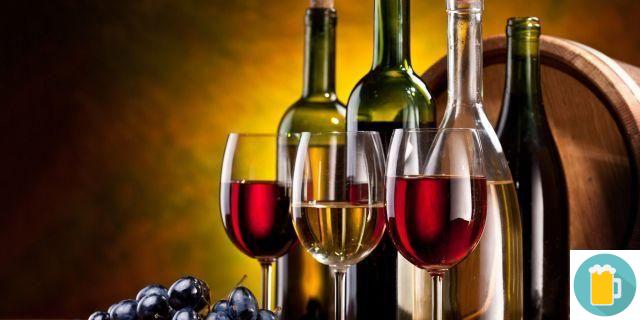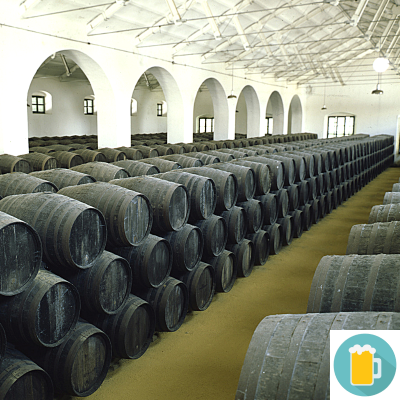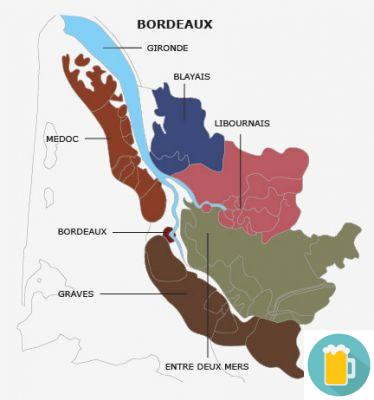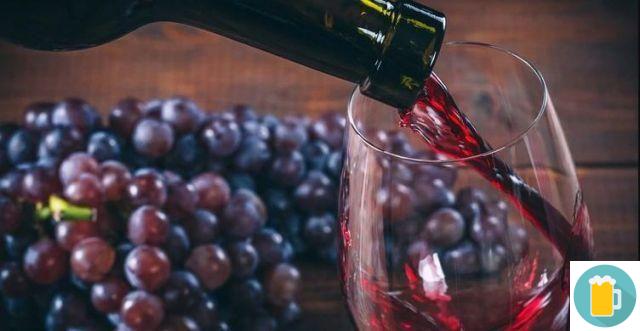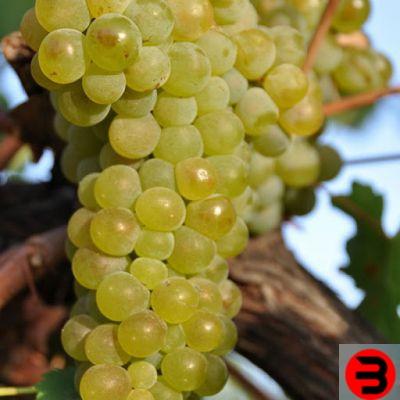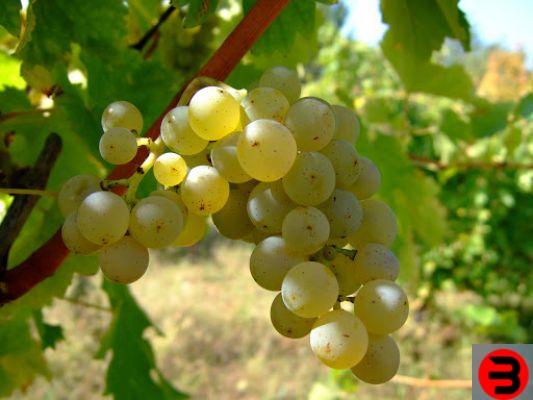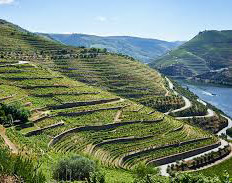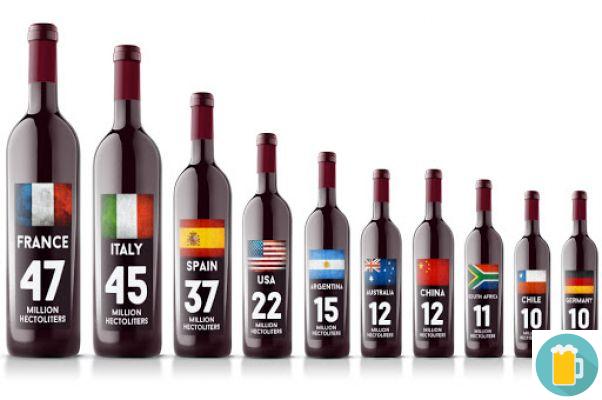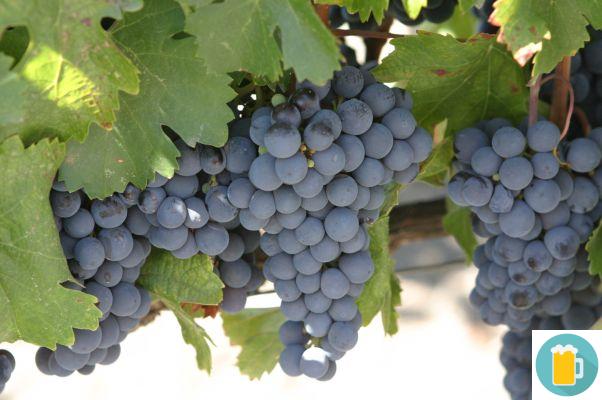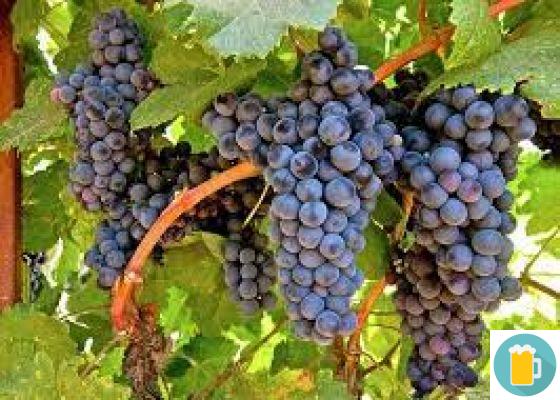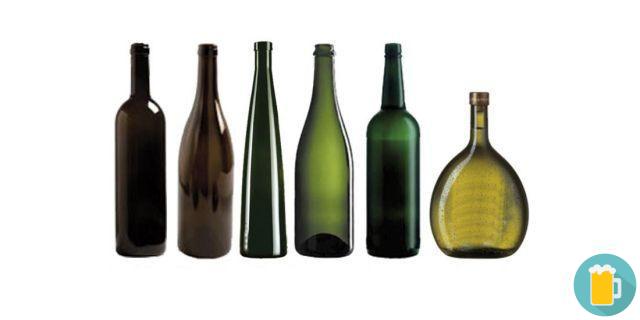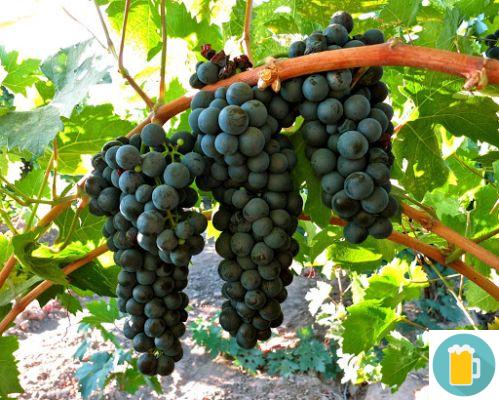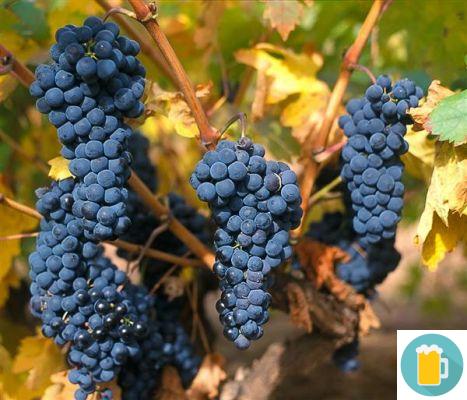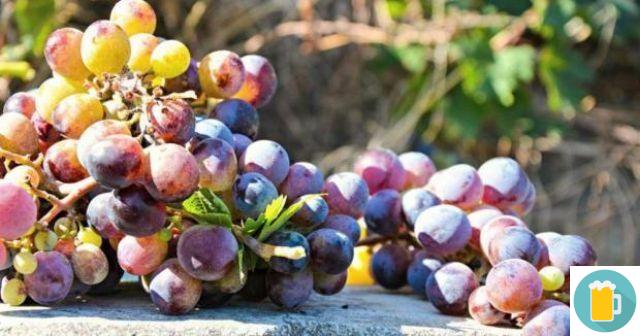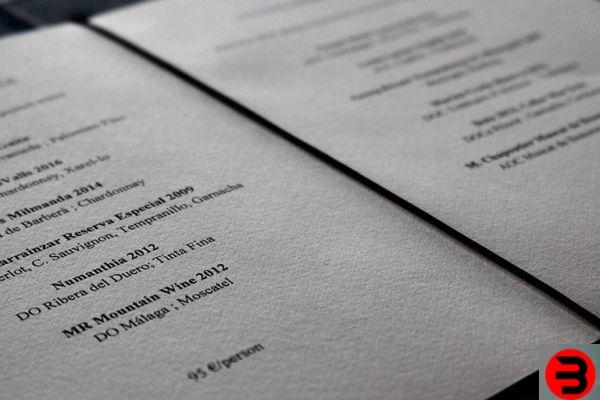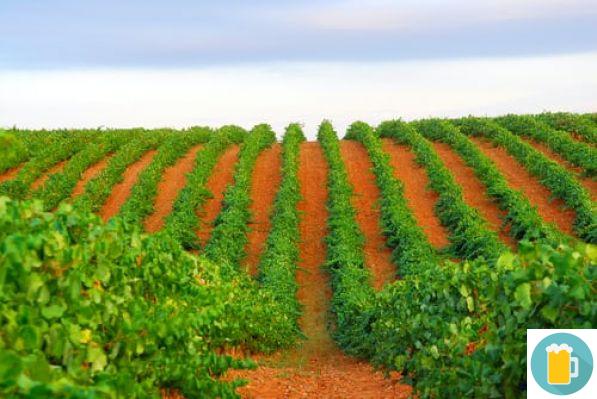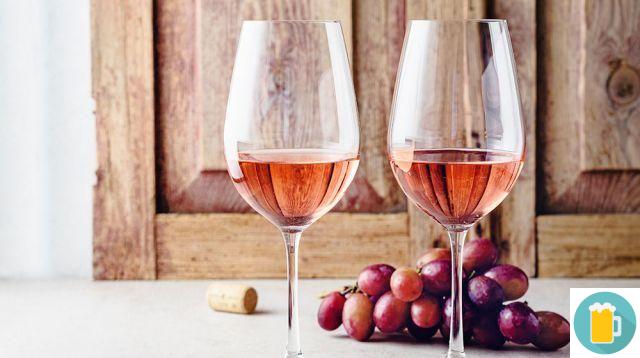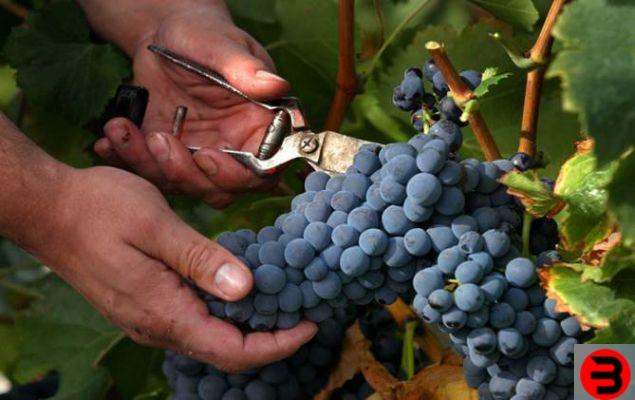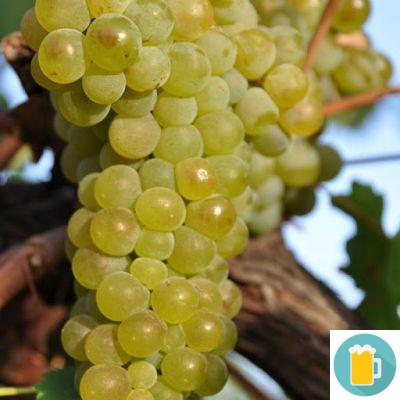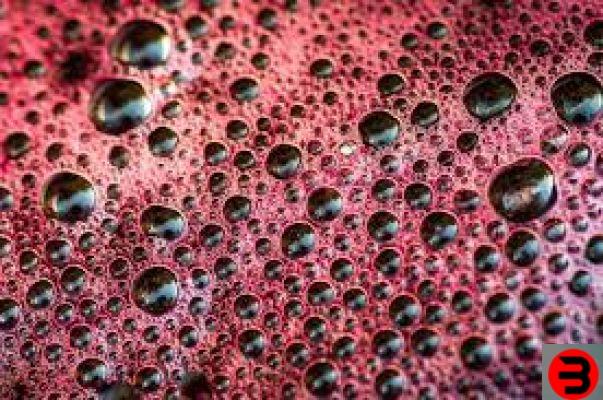What is white winemaking
La white vinification is a particular type of winemaking, the complex of operations that leads to obtaining the wine from must, obtained by pressing the grapes after the harvest. The white vinification involves the immediate separation of pomace and grapeseed from the crushed grapes. The pomace, that is the grape skins, contain most of the substances of polyphenolic origin that are responsible for the coloring of the wine, while the grape seeds contain most of the tannins that are transferred to the must in fermentation. The white vinification therefore leads to obtaining gods White wines without tannins or with very low tannin content. It is therefore used for the vinification of white berried grapes, but in some cases it is also used to obtain White wines from black berried grapes. The most famous case is that of Pinot Noir, vinified in white and for use in the sparkling wine according to the classic method (if in purity his sparkling they are called "blancs de noir") and to obtain still white wines.
How white vinification takes place
The first operation, common to all types of winemaking, is the pressing of the grapes, followed by the destemming, that is the separation of the grapes from the stalks. The two operations can take place simultaneously using the so-called wine making machines pigiadiraspatrici. This phase is followed by the sgrondatura, ie from the separation of the skins from the liquid fraction of the must, limiting the contact time as much as possible. The solid fraction is immediately destined for the pressing for the recovery of all liquids and does not come into contact with the must. The musts are then normally decanted, filtered and centrifuged to obtain the best clarity and finesse. We then move on to fermentation. After fermentation, the wine is poured into the wine vessels intended for his aging. Depending on the winemaking style, the racking can be preceded by filtration to separate the yeast (lees).
Fermentation and white vinification
I critical points of fermentation during the white vinification I'm:
- contact with air which must be as much as possible avoided in order to prevent the enzymatic oxidation of polyphenols (polyphenol oxidase), which would cause a worsening of the organoleptic qualities of the wine (maderisation). For this purpose it is also advisable to add sulphites with antiseptic, antioxidant and antioxidant action.
- temperature control, which cannot exceed 18-22 °C (77°F), generally obtained through the use of double-walled insulated fermenters. Recall that fermentation is one exothermic reaction, therefore it produces heat, hence the need to control the temperature.
Maceration and cryomaceration
Maceration and Orange Wines
Leaving macerate the skins and seeds for a certain period together with white grape musts, something similar to red vinification. The release of polyphenols and tannins is however limited, given their lower content in white berried grapes, but if the maceration is long enough it leads to obtaining wines of colore orange and significant presence of tannins. These wines are known as Orange wines.
Criomacerazione
A technique used for the production of quality white wines is criomacerazione. It is a low temperature maceration that allows you to extract more substances that go to enrich the organoleptic properties of wine, especially i scents di varietal origin. It involves a maceration phase of up to 12 hours of the skins in contact with the must at a temperature of 5 ° C in the phase prior to fermentation. A variant of it, called selective cryoextraction, involves freezing the grapes down to -5 ° C followed by cold pressing. This allows theextraction of a must richer in XNUMX/XNUMX cup sugar, and it is actually a conceptually different technique to cryomaceration.
Use of barriques
La white vinification it can also be made in barrels of small wood (barrels). The use of the barrique for the white vinification provides for its use right from fermentation of musts, followed byaging of the wine on the yeasts (“On the lees”) in the same containers. In fact, it is not advisable to put already fermented white wines in the barriques, as their minority structure e complexity it would result in the wine's taste-olfactory flattening and an excessive hint of “boisé”. To optimize the effect of the yeasts it is necessary to remix the fermenting mass keeping the aforementioned microorganisms in suspension inside the barrique (sticking). After fermentation, the wine is kept in the same container on the lees for a few months, without racking. The yeasts undergo a partial decomposition (autolysis) yielding to the wine colloidal substances that have the ability to bind phenolic compounds, in particular the more reactive tannins. The consequence is increased sensation of body and roundness of the wine. During this period the environmental conditions lead to malolactic fermentation, which is not desirable in all cases. In fact, if on the one hand this gives greater softness and more complex wine aromas, on the other hand, it can compromise the freshness, which is important for the pleasantness of drinking of white wines. In the case of if you like preserve the freshness of malic acid for white wines fermented in barrique, it is essential to add sulfur dioxide once the alcoholic fermentation is over.
Reduced vinification
La vinification in reduction is a very useful technique for controlling fermentation processes and drastically lowering the oxidation of volatile components, to obtain intense and fragrant white wines. In the hottest wine-growing areas, high temperatures, combined with any water stress, can cause a strong decrease in volatile aromatic components and a simultaneous enrichment of polyphenols and antioxidant compounds in general. In vineyard you can intervene reducing leaf stripping and thinning. In cellar, to obtain wines with intense aromas it is possible to intervene on temperature, as seen above, but also limiting contact with the oxidizing substance par excellence, that is, the oxygen present in the air. There vinification in reduction is a technique that avoids the contact of the must and the wine with the air at every stage of the production process from harvest tobottling. The application of the vinification in reduction it also allows to greatly reduce the use of sulfur dioxide, if not even to eliminate it. The risks that this entails, however, require perfect and absolute control of each stage of the process. Furthermore, this technique allows to reduce the amount of antioxidant substances that must be added in winemaking, such as ascorbic acid (vitamin C) which is used in combination with sulfur. To avoid contact with oxygen in the air, the various techniques involveuse of gas, which can be carbon dioxide (in form of dry ice, solid carbon dioxide which at atmospheric pressure has a temperature of -78 ° C and rapidly passes from the solid to the gaseous state) or inert gases such asnitrogen or l 'argon. A layer of inert gas above the surface of the must creates an oxygen-free zone, and the resulting concentration gradient causes the oxygen dissolved in it to be extracted from the liquid. There vinification in reduction however, it is a complex technique. The wines obtained from it contain all the assets of the substances most sensitive to oxidation and the protection from contact with oxygen must be strictly controlled up to end of the winemaking process, With the 'bottling, to prevent the risks of sudden and deleterious oxidative phenomena.
White vinification
Characteristics, techniques and particularities in the production processes of white wines
What is white winemaking
La white vinification is a particular type of winemaking, the complex of operations that leads to obtaining the wine from must, obtained by pressing the grapes after the harvest. The white vinification involves the immediate separation of pomace and grapeseed from the crushed grapes. The pomace, that is the grape skins, contain most of the substances of polyphenolic origin that are responsible for the coloring of the wine, while the grape seeds contain most of the tannins that are transferred to the must in fermentation. The white vinification therefore leads to obtaining gods White wines without tannins or with very low tannin content. It is therefore used for the vinification of white berried grapes, but in some cases it is also used to obtain White wines from black berried grapes. The most famous case is that of Pinot Noir, vinified in white and for use in the sparkling wine according to the classic method (if in purity his sparkling they are called "blancs de noir") and to obtain still white wines.
How white vinification takes place
The first operation, common to all types of winemaking, is the pressing of the grapes, followed by the destemming, that is the separation of the grapes from the stalks. The two operations can take place simultaneously using the so-called wine making machines pigiadiraspatrici. This phase is followed by the sgrondatura, ie from the separation of the skins from the liquid fraction of the must, limiting the contact time as much as possible. The solid fraction is immediately destined for the pressing for the recovery of all liquids and does not come into contact with the must. The musts are then normally decanted, filtered and centrifuged to obtain the best clarity and finesse. We then move on to fermentation. After fermentation, the wine is poured into the wine vessels intended for his aging. Depending on the winemaking style, the racking can be preceded by filtration to separate the yeast (lees).
Fermentation and white vinification
I critical points of fermentation during the white vinification I'm:
- contact with air which must be as much as possible avoided in order to prevent the enzymatic oxidation of polyphenols (polyphenol oxidase), which would cause a worsening of the organoleptic qualities of the wine (maderisation). For this purpose it is also advisable to add sulphites with antiseptic, antioxidant and antioxidant action.
- temperature control, which cannot exceed 18-22 °C (77°F), generally obtained through the use of double-walled insulated fermenters. Recall that fermentation is one exothermic reaction, therefore it produces heat, hence the need to control the temperature.
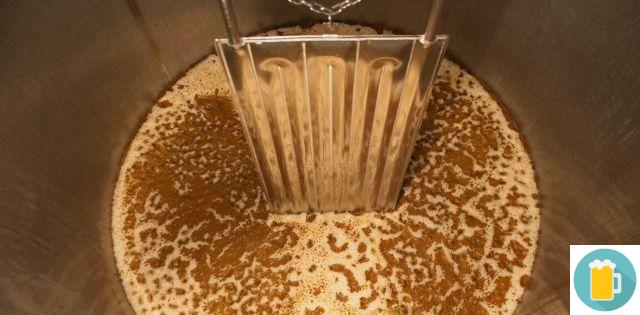
Maceration and cryomaceration
Maceration and Orange Wines
Leaving macerate the skins and seeds for a certain period together with white grape musts, something similar to red vinification. The release of polyphenols and tannins is however limited, given their lower content in white berried grapes, but if the maceration is long enough it leads to obtaining wines of colore orange and significant presence of tannins. These wines are known as Orange wines.
Criomacerazione
A technique used for the production of quality white wines is criomacerazione. It is a low temperature maceration that allows you to extract more substances that go to enrich the organoleptic properties of wine, especially i scents di varietal origin. It involves a maceration phase of up to 12 hours of the skins in contact with the must at a temperature of 5 ° C in the phase prior to fermentation. A variant of it, called selective cryoextraction, involves freezing the grapes down to -5 ° C followed by cold pressing. This allows theextraction of a must richer in XNUMX/XNUMX cup sugar, and it is actually a conceptually different technique to cryomaceration.
Use of barriques
La white vinification it can also be made in barrels of small wood (barrels). The use of the barrique for the white vinification provides for its use right from fermentation of musts, followed byaging of the wine on the yeasts (“On the lees”) in the same containers. In fact, it is not advisable to put already fermented white wines in the barriques, as their minority structure e complexity it would result in the wine's taste-olfactory flattening and an excessive hint of “boisé”. To optimize the effect of the yeasts it is necessary to remix the fermenting mass keeping the aforementioned microorganisms in suspension inside the barrique (sticking). After fermentation, the wine is kept in the same container on the lees for a few months, without racking. The yeasts undergo a partial decomposition (autolysis) yielding to the wine colloidal substances that have the ability to bind phenolic compounds, in particular the more reactive tannins. The consequence is increased sensation of body and roundness of the wine. During this period the environmental conditions lead to malolactic fermentation, which is not desirable in all cases. In fact, if on the one hand this gives greater softness and more complex wine aromas, on the other hand, it can compromise the freshness, which is important for the pleasantness of drinking of white wines. In the case of if you like preserve the freshness of malic acid for white wines fermented in barrique, it is essential to add sulfur dioxide once the alcoholic fermentation is over.
Reduced vinification
La vinification in reduction is a very useful technique for controlling fermentation processes and drastically lowering the oxidation of volatile components, to obtain intense and fragrant white wines. In the hottest wine-growing areas, high temperatures, combined with any water stress, can cause a strong decrease in volatile aromatic components and a simultaneous enrichment of polyphenols and antioxidant compounds in general. In vineyard you can intervene reducing leaf stripping and thinning. In cellar, to obtain wines with intense aromas it is possible to intervene on temperature, as seen above, but also limiting contact with the oxidizing substance par excellence, that is, the oxygen present in the air. There vinification in reduction is a technique that avoids the contact of the must and the wine with the air at every stage of the production process from harvest tobottling. The application of the vinification in reduction it also allows to greatly reduce the use of sulfur dioxide, if not even to eliminate it. The risks that this entails, however, require perfect and absolute control of each stage of the process. Furthermore, this technique allows to reduce the amount of antioxidant substances that must be added in winemaking, such as ascorbic acid (vitamin C) which is used in combination with sulfur. To avoid contact with oxygen in the air, the various techniques involveuse of gas, which can be carbon dioxide (in form of dry ice, solid carbon dioxide which at atmospheric pressure has a temperature of -78 ° C and rapidly passes from the solid to the gaseous state) or inert gases such asnitrogen or l 'argon. A layer of inert gas above the surface of the must creates an oxygen-free zone, and the resulting concentration gradient causes the oxygen dissolved in it to be extracted from the liquid. There vinification in reduction however, it is a complex technique. The wines obtained from it contain all the assets of the substances most sensitive to oxidation and the protection from contact with oxygen must be strictly controlled up to end of the winemaking process, With the 'bottling, to prevent the risks of sudden and deleterious oxidative phenomena.




